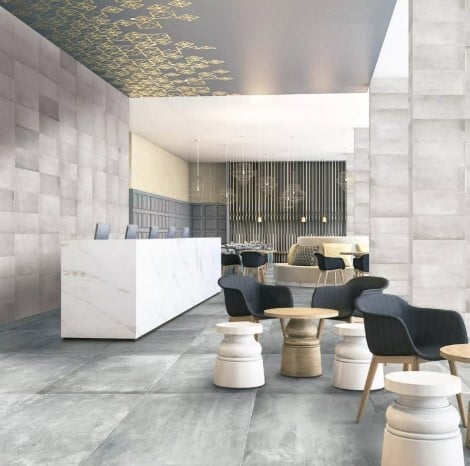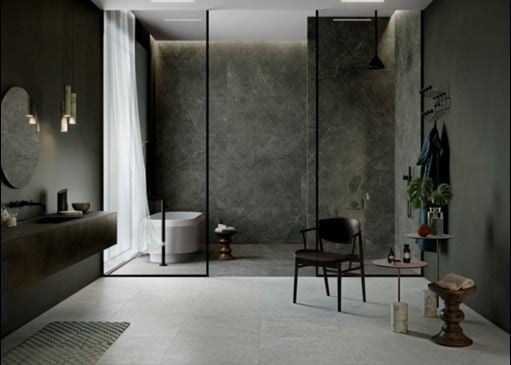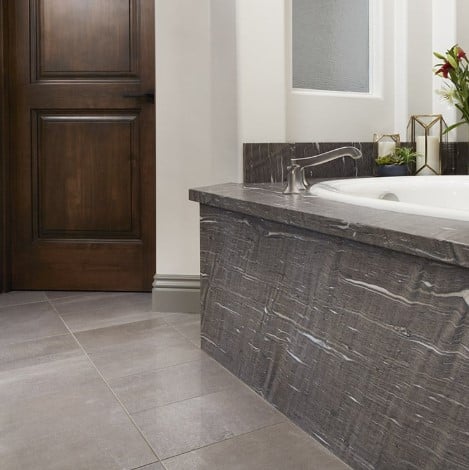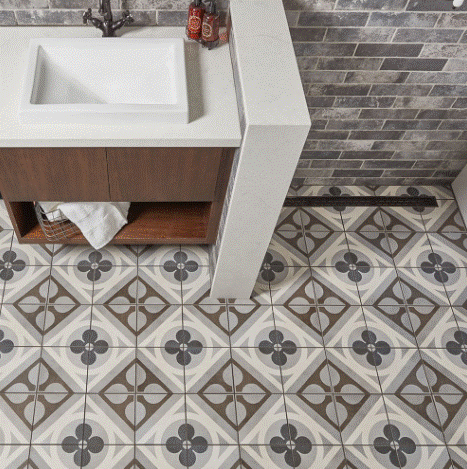
Porcelain tile is a popular choice for many homeowners looking for tile for their floors, backsplash, bathrooms and other areas. Despite its fragile-sounding name, porcelain tile is far different from your grandma’s fine china. A durable, low-maintenance and water-resistant tile option, porcelain may be the perfect choice for your next home tile project. By definition, porcelain tile, is any tile with an absorption rate of one half of one percent or less. Let’s take a look at this beautiful yet practical material, how it’s made and where it can be used in the home.

How Is Porcelain Made?
Porcelain begins as a refined clay mixture. Typically, this mixture contains clay, silica sand, feldspar and sometimes other minerals. These are combined with water to form a sand-like consistency, and the mixture is then slightly dried to achieve the perfect moisture level for the next step. If color body porcelain is being made (see more about that here), the clay mixture is colored to match the surface color of the tile.
The clay mixture is then pressed into tile shapes, sizes and and in some tile, surface options, other than flat are pressed into the body of the tile. After this, the tile are then baked to remove most of the remaining moisture. Next, the desired pattern and colors are applied using special printing technology, known as digital print technology. This allows a huge range of designs to be created, including porcelain tiles that look like wood, marble, brick, stone, cement and other materials.
Once the pattern or color is applied, the tiles are glazed to form a protective surface. Finally, porcelain tiles are fired in a kiln at extreme temperatures, as high as 2500 degrees F. This fuses the glaze to the body of the tile. The final product is durable, water-resistant, and has zero emissions. Porcelain tile is easy to clean and maintain, making it a great choice for a variety of applications, homes and lifestyles.

What Is Porcelain Used For?
Porcelain tile can be used for a range of applications inside and outside of the home. Popular uses include porcelain flooring (such as wood-look porcelain “planks”), marble looks, limestone looks, concrete, and backsplashes and shower walls. Porcelain tile with R11 Anti-Slip Finish can even be used in outdoor or wet spaces, such as patios, bathroom floors and more. Porcelain tile can also be used on the waterline of outdoor swimming pools or spas.

Why Is Porcelain Popular?
One of the reasons why porcelain is so popular is due to its durability. The firing process that porcelain tile goes through makes it extremely hard and resistant to scratches, chips and other wear and tear.
It is also not porous, which means the tile does not readily absorb water or liquids, making it stain resistant to boot. Its dense composition and glazed surface make porcelain very easy to clean. It requires little maintenance, so it can be an excellent option for messy or high-traffic areas like kitchens. Plus, with a multitude of “lookalike” options available, many homeowners don’t have to sacrifice style to enjoy the convenience and practical benefits of porcelain tile.
See inspiration and examples of how porcelain can transform a space when you browse our porcelain tile photo gallery.





